2023 VW Tiguan Review: A large, but just OK crossover

Pros: Available third row; stronger engine than most rivals; big for a compact crossover
Cons: Below-average fuel economy and no hybrid option; uninspiring design, touch climate and steering wheel controls have a learning curve
The 2023 Volkswagen Tiguan is VW’s most popular model, and it’s easy to see why. Americans like big cars, and the Tiguan hits a sweep spot of being both big and agreeably priced at the same time. It’s inoffensive, but hardly daring, when it comes to styling. All of the necessary tech is either standard or optionally available, and there’s even an available third row (again, big). The Tiguan presses the right buttons for crossover shoppers here, and while we’d rather be cruising around in a GTI — utility be damned — there’s no denying the Tiguan is the right fit for a lot of lifestyles.
That said, the Tiguan still isn’t among our top-recommended small SUVs. The best in the segment are more spacious, more efficient and have higher-quality interiors – some are also more exciting to look at or drive. A Honda CR-V Hybrid, Mazda CX-50, Hyundai Tucson Hybrid and Kia Sportage Hybrid all beat the Tiguan in numerous ways. Unfortunately for the Tiguan, there are even other Volkswagen SUVs we’d buy before plunking down the money for this one. The Taos is a pleasant surprise of an SUV, and despite it being closer to a “mid-compact” crossover, it’s still shockingly huge and family-friendly in size (assuming you don’t need a third row). To look further outside the box, there’s the electric ID.4 that drives far better than a Tiguan and obviously drinks zero gasoline. Of course, you’d have to be OK making the leap to an EV and accept the extra initial purchase cost over a Tiguan.
Interior & Technology | Passenger & Cargo Space | Performance & Fuel Economy
What it’s like to drive | Pricing & Features | Crash Ratings & Safety Features
What’s new for 2023?
Volkswagen gave the Tiguan a notable mid-cycle refresh for 2022, so changes for 2023 are minimal. New 19-inch wheels are fitted to the SE R-Line Black models, and the USB-C ports have been upgraded for faster charging speeds, but that’s all.
What are the Tiguan’s interior and in-car technology like?
The interior is styled conservatively, but the addition of the new digital instrument panel last year livens things up for the driver. Everything is easy to use and find. Materials quality is going to depend a bit on how you spec a Tiguan, but be prepared to meet some hard plastics in the cabin. As expected for a traditionally-shaped crossover, the driving position is high, and visibility is phenomenal thanks to a tall roof, and low windowsills and dashboard.
All Tiguans get a Digital Cockpit digital instrument panel, but the size differs by trim level: 8 inches standard with a 10-inch upgrade. The “Climatronic Touch” climate interface with slider controls is available, and feels like a huge upgrade to the manual HVAC dials in the S trim. You can also find touch controls on the top trim’s steering wheel. We acclimated to them quickly, and they’re not a burden to use compared to the traditional buttons found in the S, thanks in part to the haptic feedback they provide. The lower trims have a 6.5-inch color touchscreen (below left), but the SEL Premium R-Line gets an 8-inch infotainment system with proximity sensor and voice control (below right). Although these systems aren’t particularly flashy in appearance, they’re easy to use, especially to the infuriating controls found in VW’s ID.4.
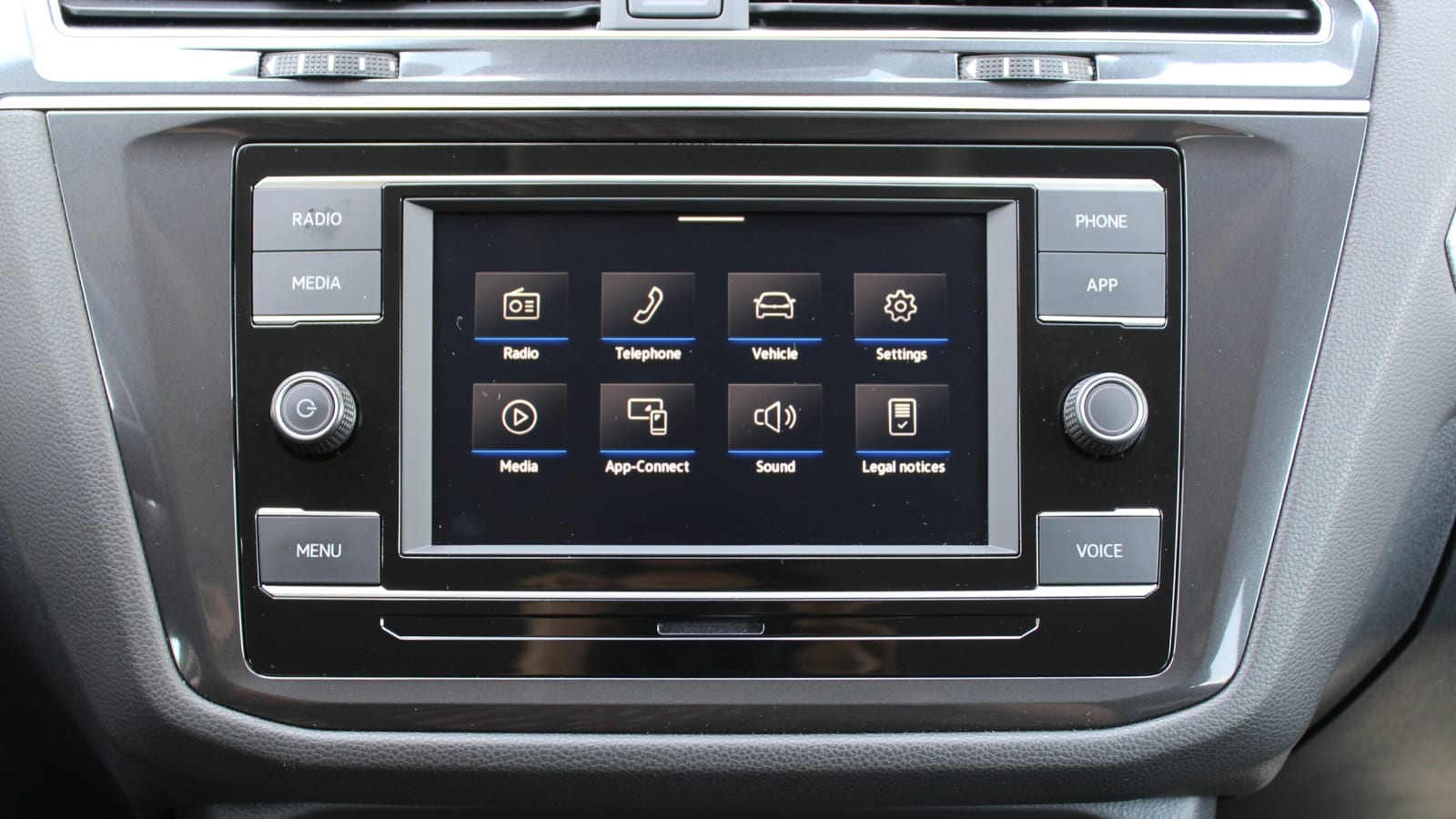

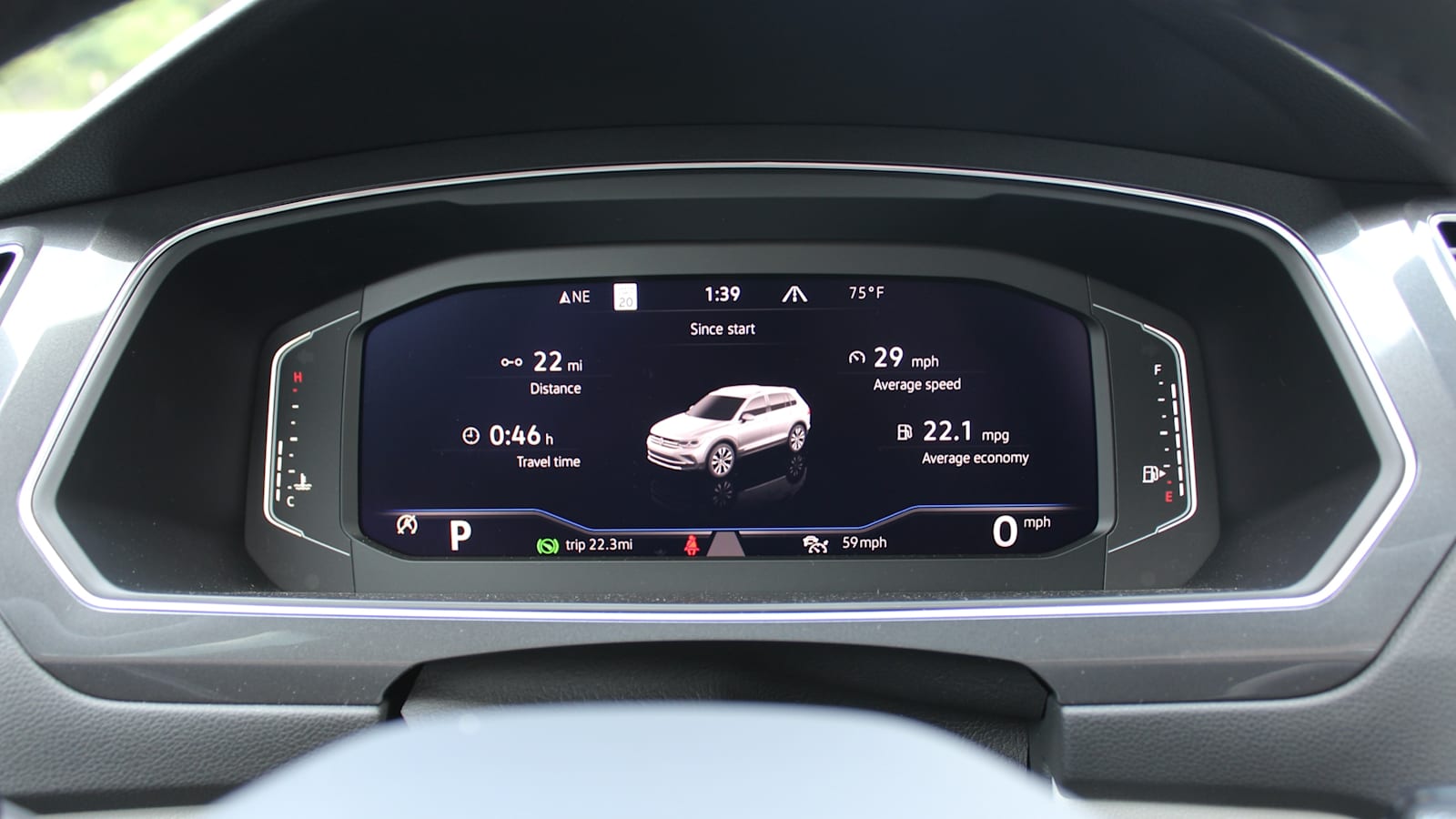
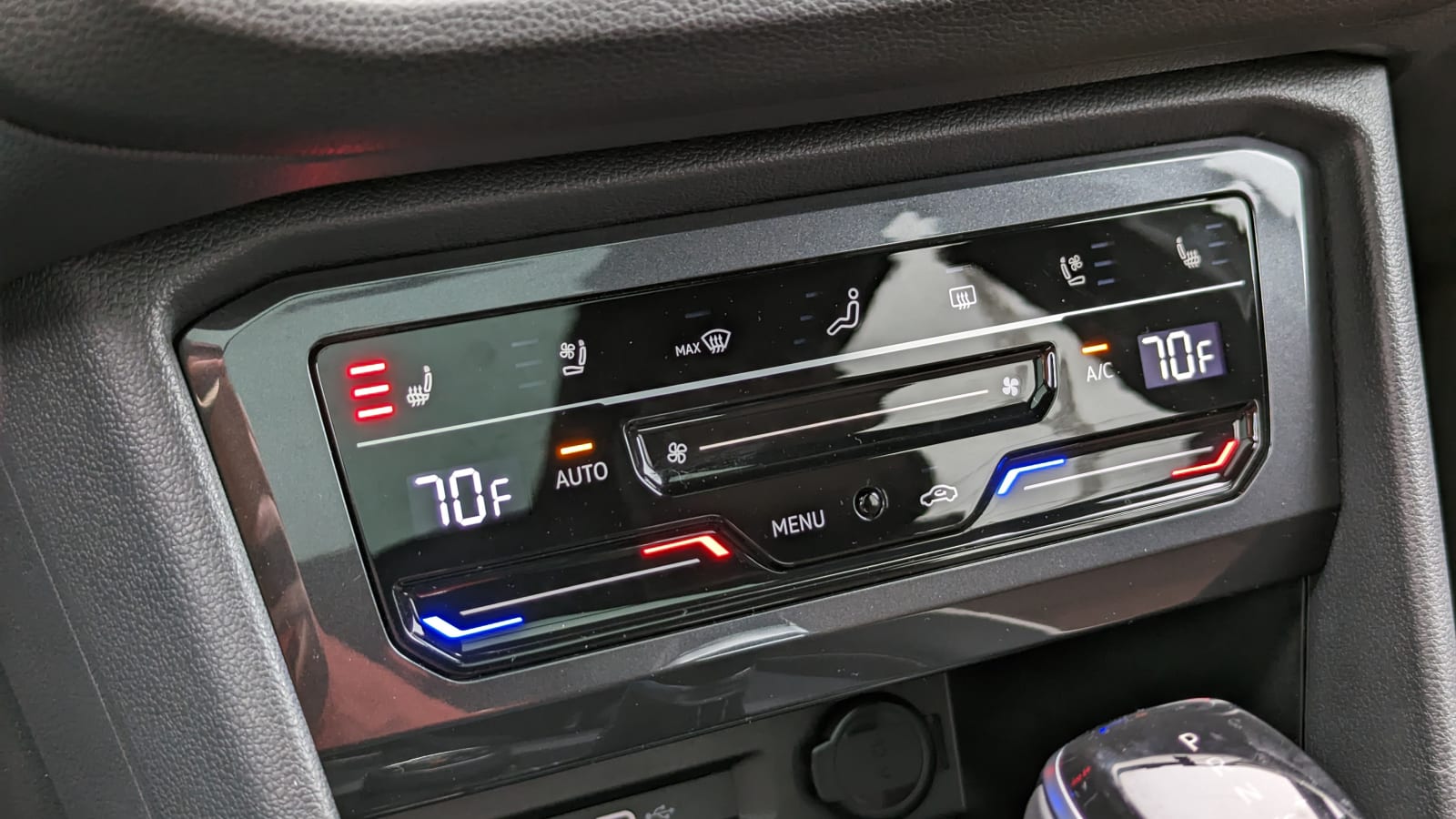
How big is the Tiguan?
The VW Tiguan is pretty big for a “compact” crossover, but then so is most of the competition these days. It’s incredibly family friendly, though the back seat and cargo room of the Honda CR-V, Nissan Rogue, Kia Sportage and Hyundai Tucson best it, while the Toyota RAV4 matches it. One Tiguan advantage, though, is the back seat’s sliding capability that lets you bring kids closer to you up front (good for wiping noses) or expanding cargo volume.
The Tiguan has another ace up its sleeve, too: a third-row seat that comes standard on all front-wheel-drive models. It’s no longer an option for all-wheel-drive versions. Although primarily intended for children, and for infrequent use, only the Mitsubishi Outlander and the slightly larger Kia Sorento offer three rows in this general size class. Note that cargo space is reduced with the third-row seat, pictured below right.
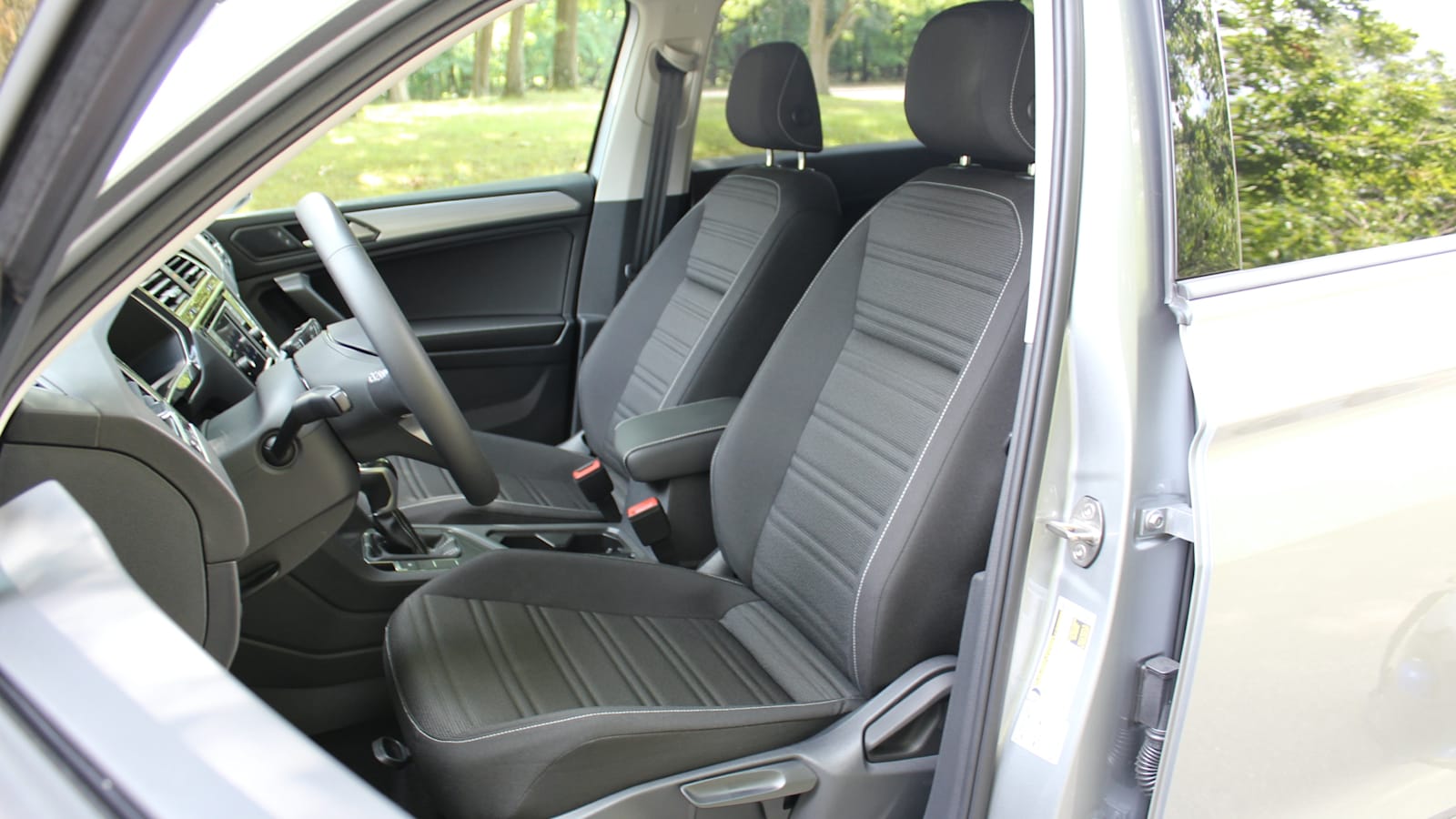

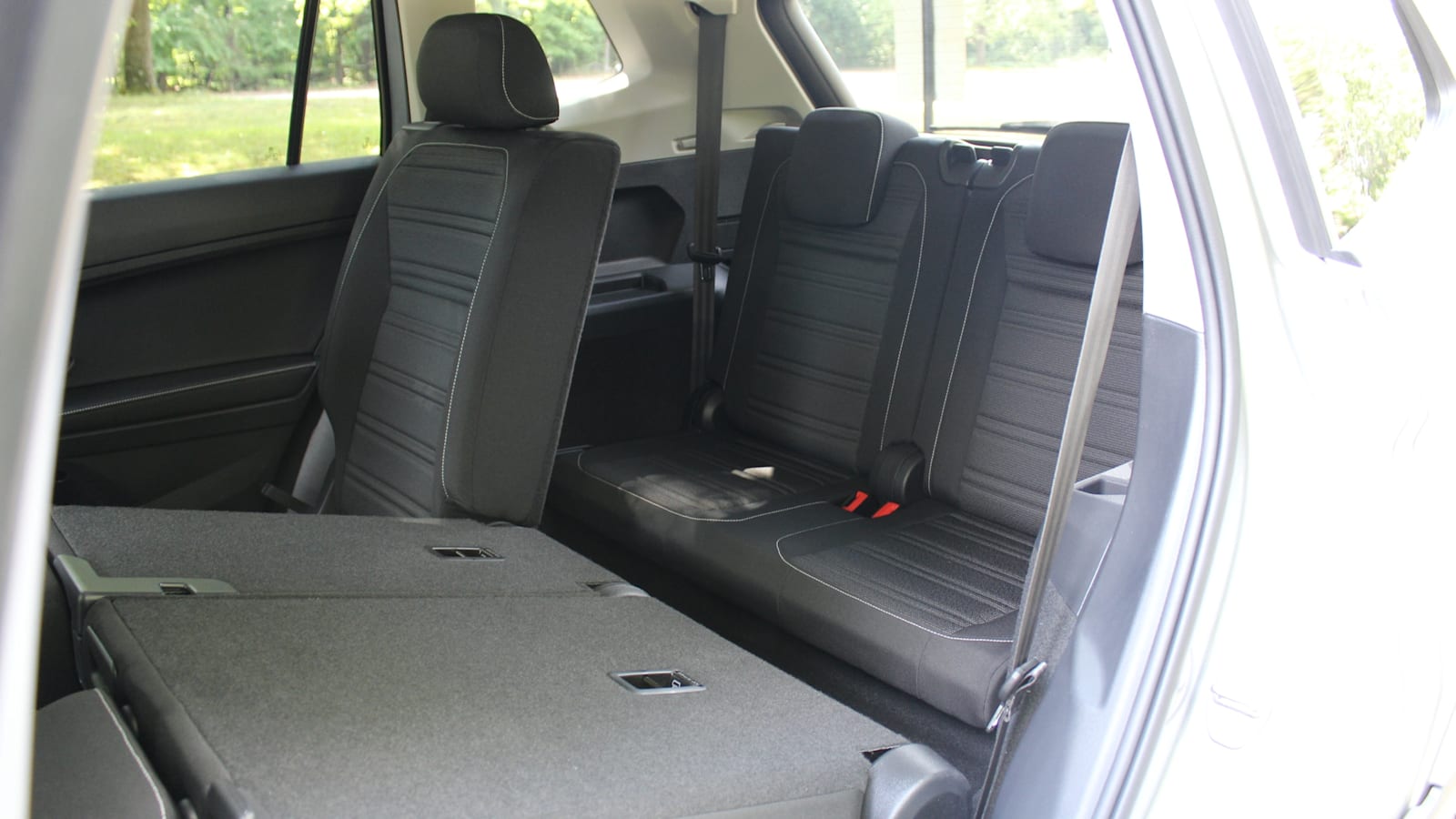
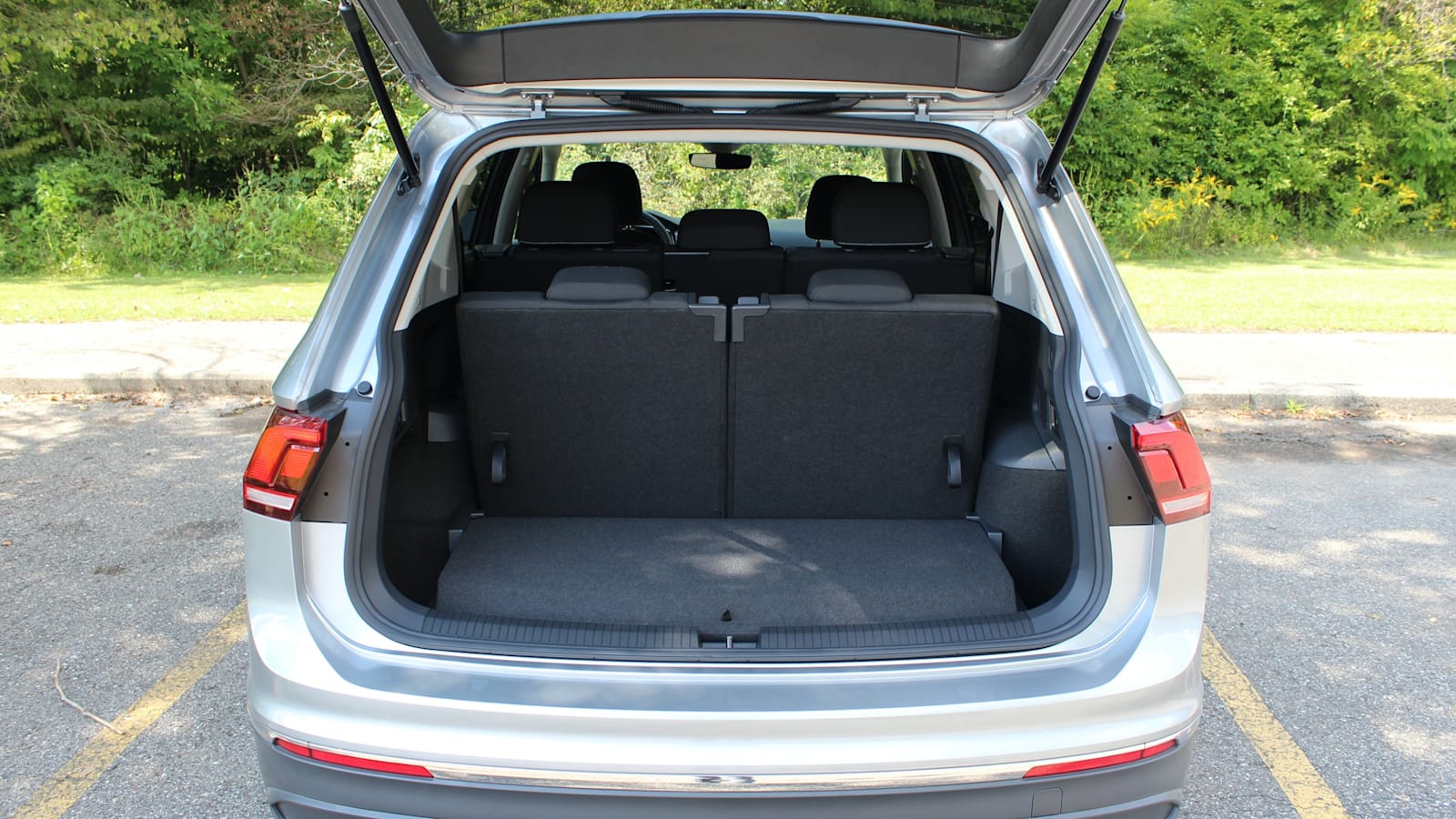
What are the Tiguan’s fuel economy and performance specs?
The sole engine option is a turbocharged 2.0-liter inline-four producing 184 horsepower and 221 pound-feet of torque. An eight-speed automatic transmission directs that power to either the front wheels or the 4Motion all-wheel-drive system available on all trims. There are no shift paddles on the steering wheel, but you can select your own gears using the manual mode on the gear lever.
Fuel economy numbers improve by roughly 1 mpg from the previous model year. The front-wheel-drive S gets 24 miles per gallon city, 31 mpg highway and 27 mpg combined, while the other trims are slightly lower at 23/30/26 mpg. The S 4Motion and SE 4Motion models get 22/29/25 mpg. The R-Line 4Motion trim comes in lower at 21/28/24 mpg. These are below what you’d get with the base engines of many competitors, some of which offer even more efficient hybrids.
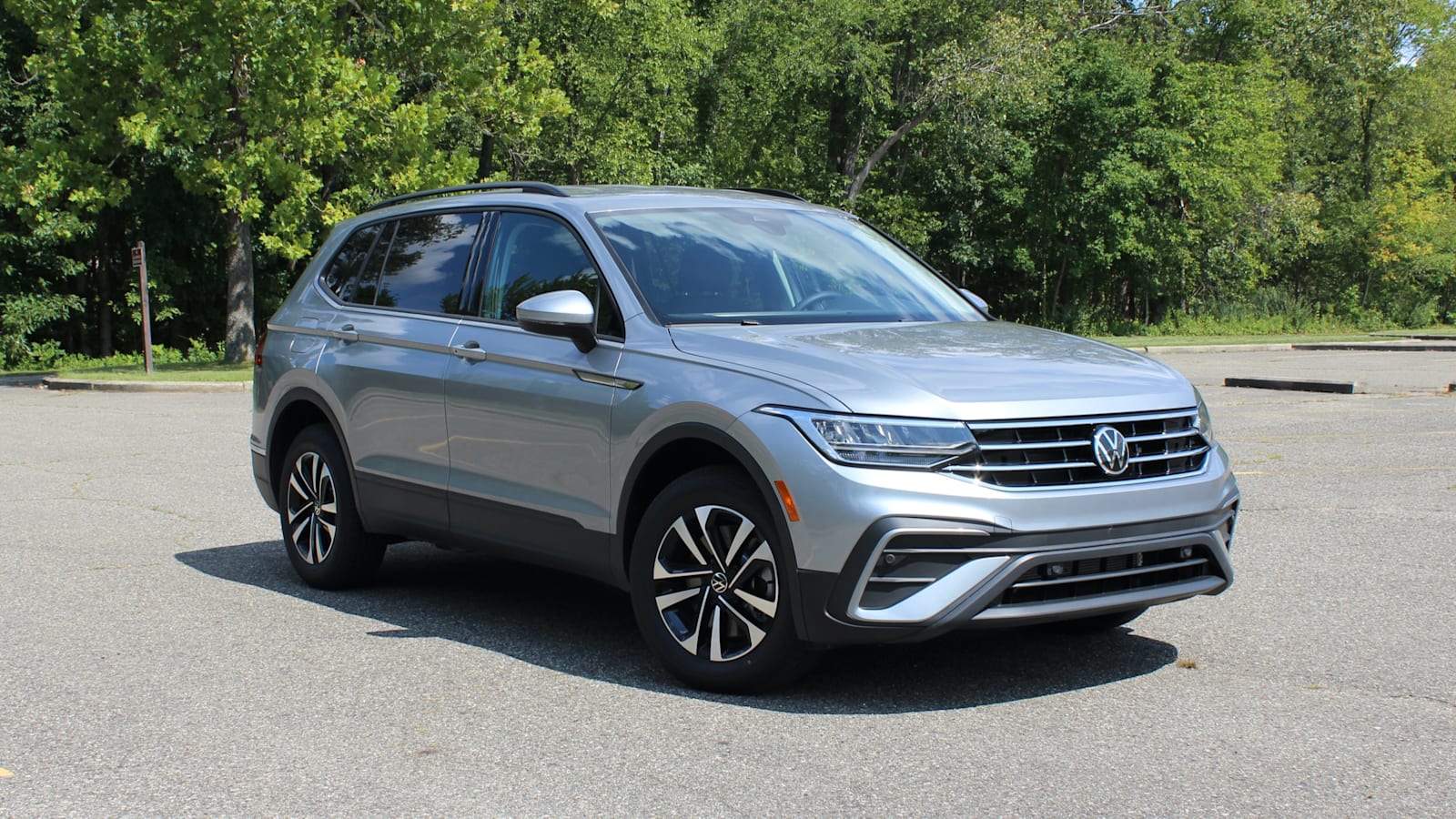
What’s the Tiguan like to drive?
The 4Motion models feel hesitant to leap of the line. After a moment of waiting, you feel the initial burst of torque as the Tiguan comes to life. It’s not particularly quick, but it’s not slow either, and we don’t really see a need for more power in most locales. In fact, the standard turbo engine is more powerful and peppy than most standard powertrains in this class, most of which are naturally aspirated (no turbo) and/or saddled with a continuously variable transmission. The boosted four-cylinder is more eager to motivate the wheels of the front-drive versions, though the S trim we tested (above) lacked the grip of the all-wheel-drive Tiguan SEL R-Line and its stickier Pirelli rubber. This results in wheel spin — and the ensuing intervention of traction control — that seems to delay the car’s launch as much as with the 4Motion-equipped SEL R-Line.
Once under way, the Tiguan isn’t as boring to drive as its segment suggests. It’s surprisingly light-footed on more dynamic roads. Despite the light steering feel with on-center numbness consistent with most Volkswagens, it’s not entirely devoid of enjoyment on a nice stretch of pavement. There’s a bit of softness in the ride, which helps to filter out some of the harder bumps along the way, but it doesn’t get in the way of the Tiguan’s ability for some light frolicking.
What other Volkswagen Tiguan reviews can I read?
2022 VW Tiguan First Drive Review | Sibling rivalry
Our first drive of the Tiguan after its midcycle refresh for the 2022 model year.
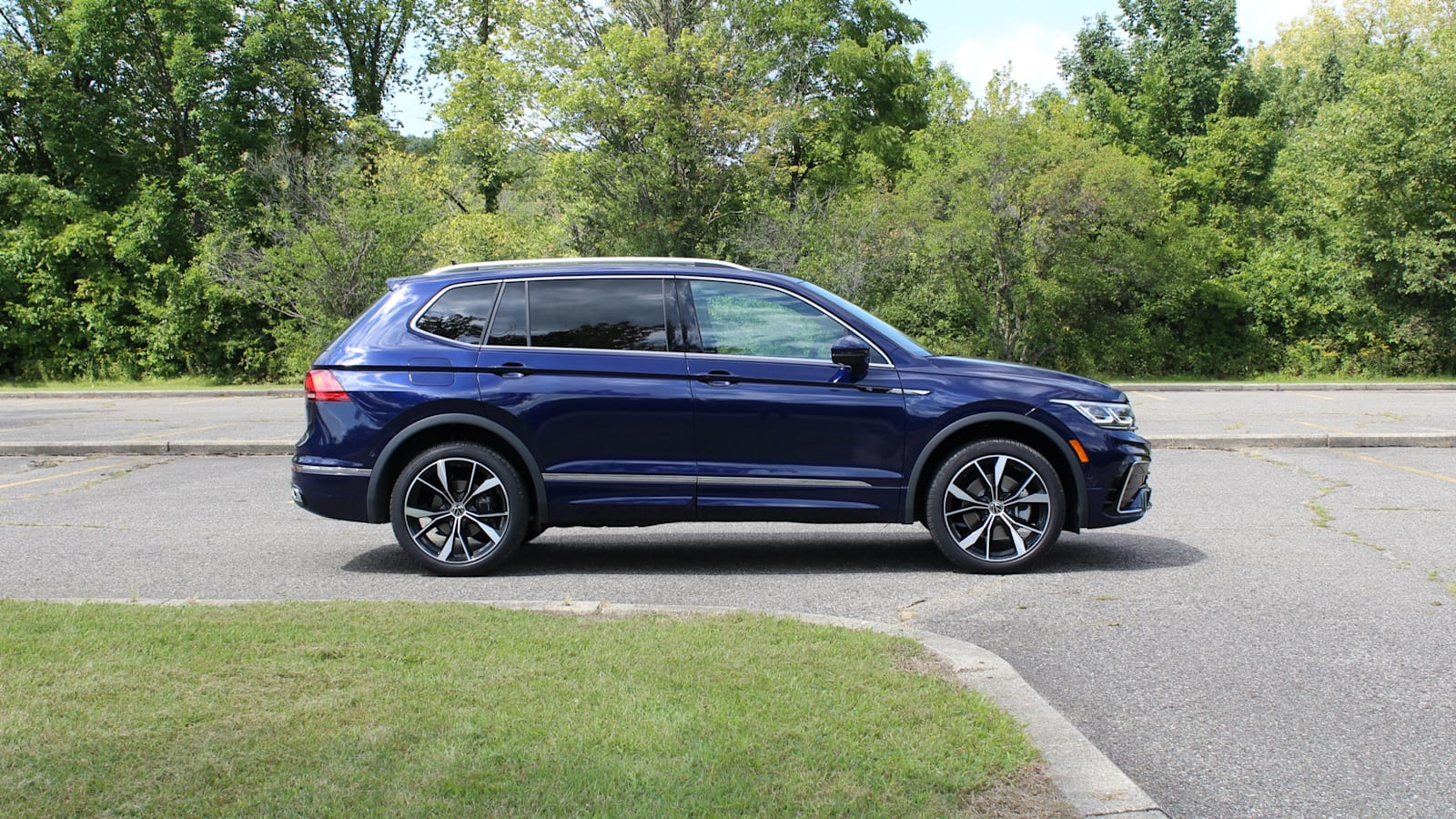
How much is the 2023 Tiguan?
There are four trims of Tiguan for 2023. The base S trim starts at $28,145 including the $1,295 destination fee. That’s a total increase of $955 beyond the previous model year. Front-wheel drive is standard, and in all but the top trim (which gets AWD as standard), adding 4Motion all-wheel drive costs $1,500.
The S includes 17-inch alloy wheels, LED headlights and daytime running lights, LED taillights, heated side mirrors, proximity entry and push-button start, a variety of driver assistance tech (see Safety section), six-way manually adjustable front seats, heated front seats, a third row of seating for a total of seven seats, cloth seating surfaces, manual air conditioning, 8-inch Digital Cockpit, and 6.5-inch color infotainment touchscreen.
Also available as options or in higher trims are 4Motion all-wheel drive, alloy wheels up to 20 inches, remote start, adaptive front lighting, a hands-free liftgate, illuminated grille, power panoramic sunroof, rain-sensing windshield wipers, auto-dimming rear-view mirror, 15-color ambient lighting, eight-way power driver’s seat with memory, power passenger seat, leatherette or leather seating, heated steering wheel, ventilated front seats, adaptive cruise control, road sign recognition, 10-inch Digital Cockpit, 8-inch color infotainment touchscreen with proximity sensor, a Fender audio system, SiriusXM and a wireless phone charger.
The entire 2023 Tiguan range and prices are below. You can get the full breakdown of 2023 Tiguan trims, specs and pricing here on Autoblog.
Tiguan S: $28,145
Tiguan SE: $31,875
Tiguan SE R-Line Black: $34,605
Tiguan SEL Premium R-Line: $38,975
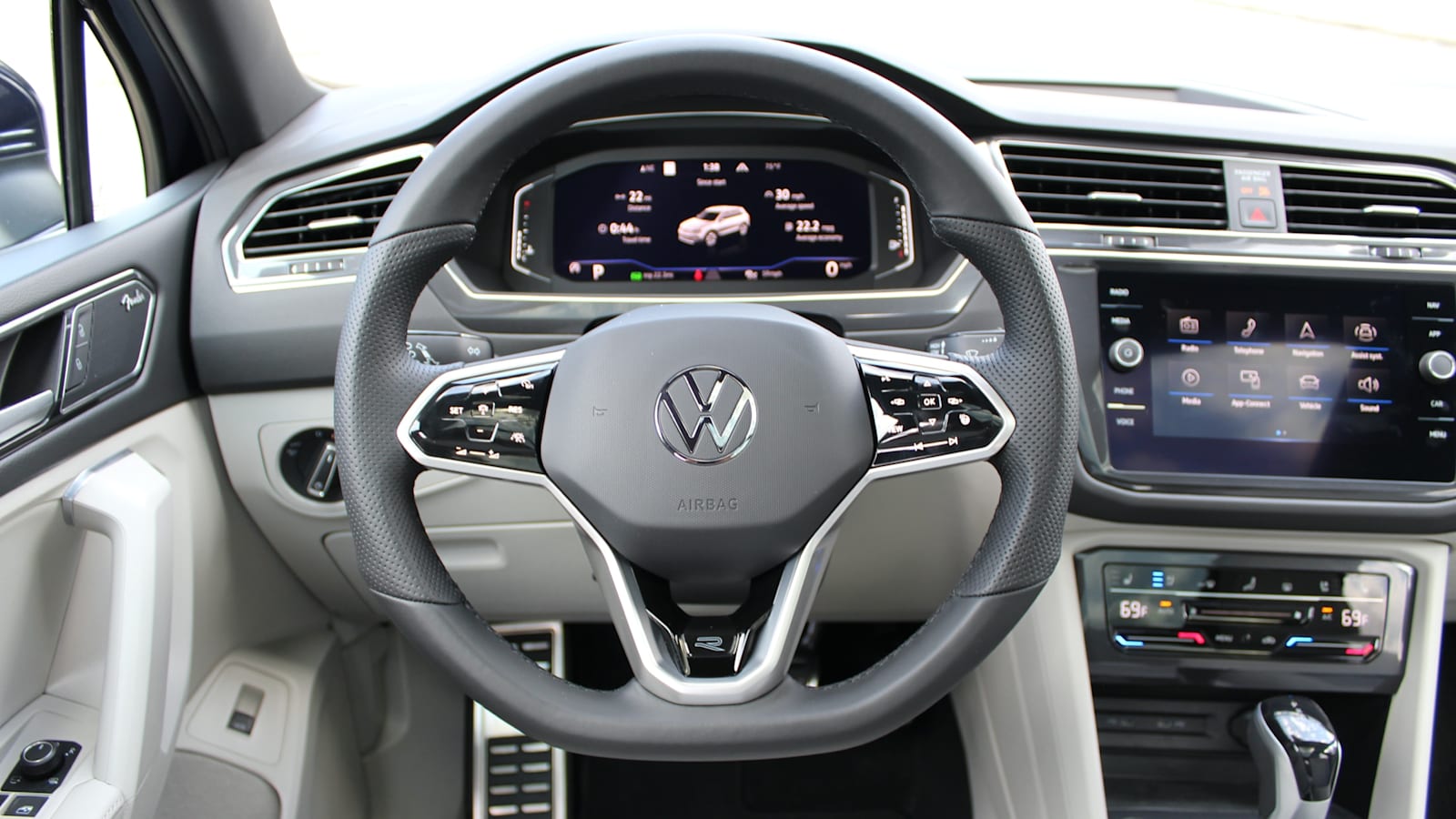
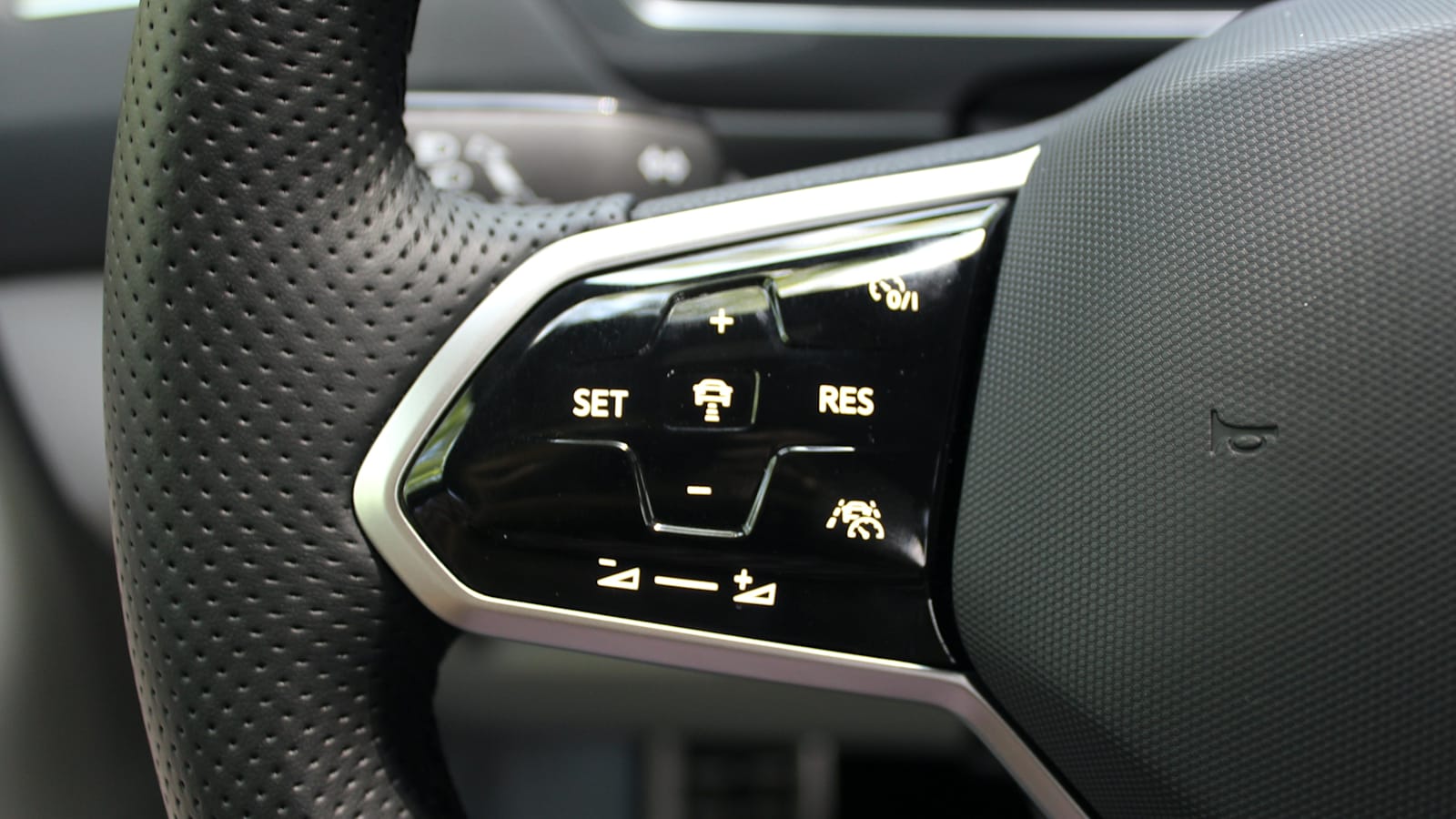
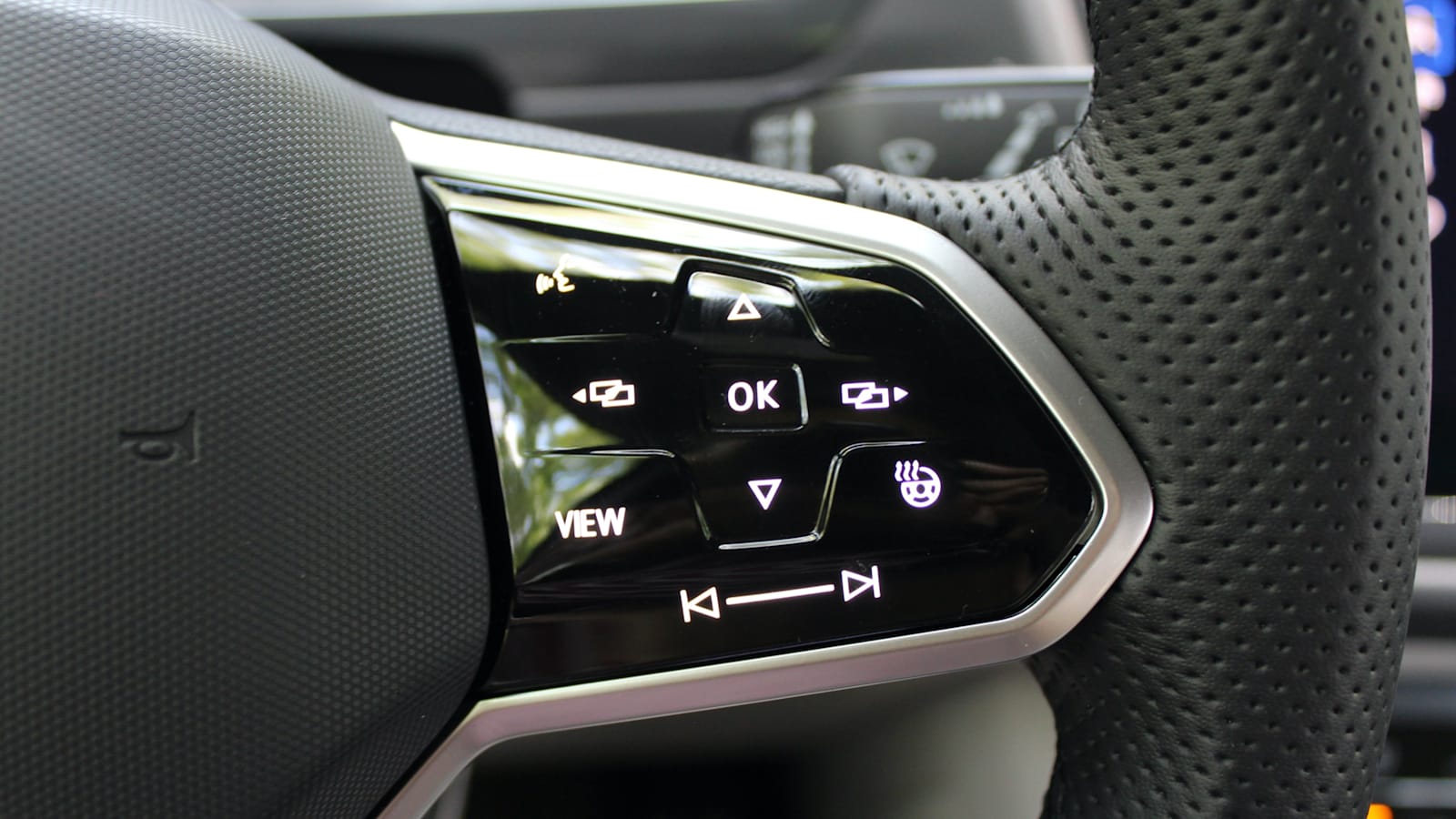
What are the Tiguan’s safety ratings and driver assistance features?
While front collision warning and automatic emergency braking, blind-spot monitoring and rear traffic alert are all standard, IQ.Drive — a $895 option for the S and standard in other trims — adds adaptive cruise control with stop-and-go-capability, lane keeping assist and emergency assist (which attempts to wake an unresponsive driver before engaging hazard lights and bringing the car to a stop). There’s a third level of driver assistance technologies that can be added including auto high beams, an automatic parking assistant and road sign recognition software.
The 2022 VW Tiguan received a Top Safety Pick+ award from the Insurance Institute for Highway Safety. It scored the highest-possible “Good” rating in every crash test, and the headlights were rated “Acceptable.” The Tiguan had not been fully tested by the NHTSA at the time of this writing.
Related Video:



